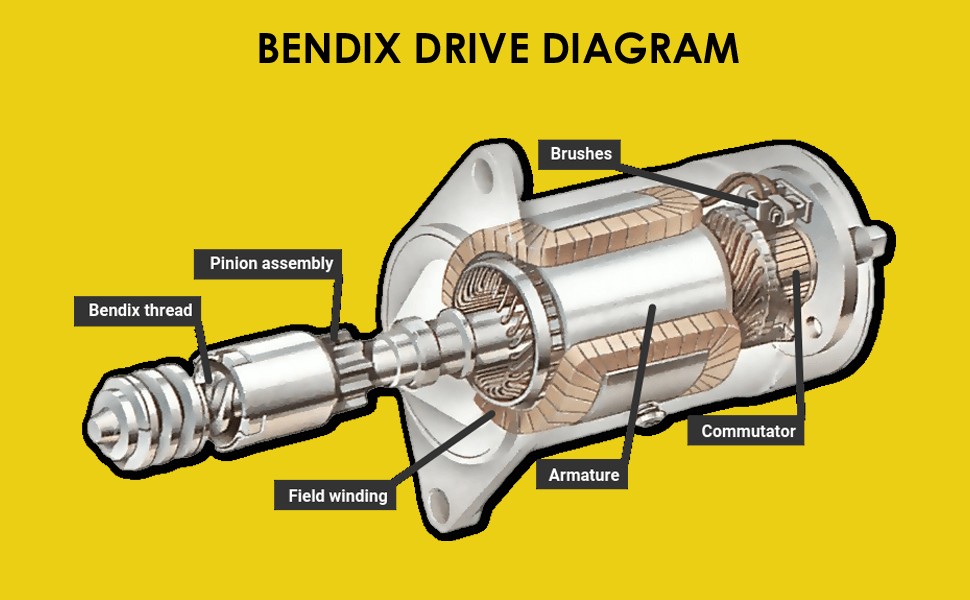
Bendix drive
A particular style of engagement mechanism found in starter motors on internal combustion engines is known as a Bendix drive. When the starter is powered on or when the engine ignites, the device enables the pinion gear of the starter motor to automatically engage or disengage the ring gear (which is coupled to the wheel or flexplate of the engine). It bears the name of Vincent Hugo Bendix, its crea
The starter drive pinion is mounted on a helical drive spring in the Bendix system. The starter motor's inertia allows the drive pinion assembly to wound the spring as soon as it turns, changing the spring's length and enabling the pinion to mesh with the ring gear. The drive pinion is pushed back and out of mesh with the ring gear when the engine starts due to backdrive from the ring gear, which happens when the drive pinion rotates faster than the starter.
The main disadvantage of the Bendix drive is that it depends on a certain amount of "clash" between the pinion and ring gear teeth before they mate completely. The pinion teeth are already rotating when they come into contact with the static ring gear, and unless they happen to align perfectly at the moment they engage, they will strike the ring gear teeth side-to-side rather than face-to-face and continue to rotate. Both sets of teeth get worn out more as a result. Because of this, the pre-engagement method utilizing a starter solenoid has essentially replaced the Bendix drive in starter motor design.